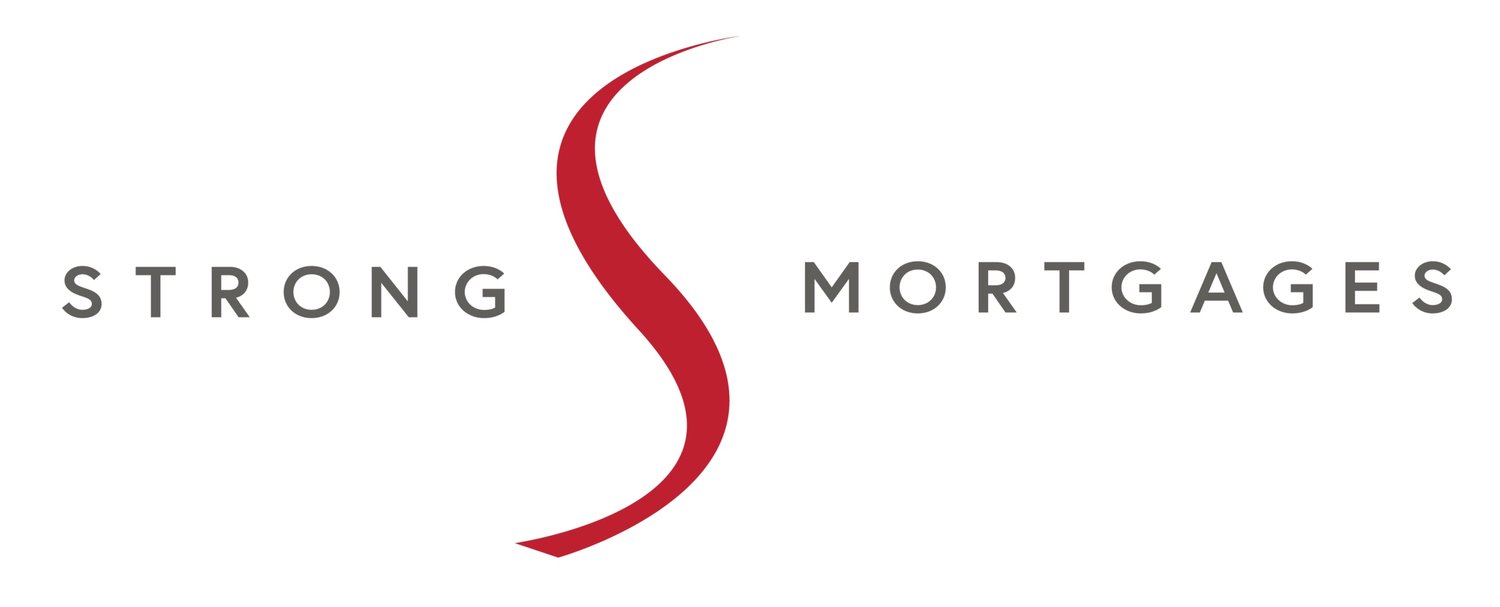 Canadian existing home sales and housing starts declined in most markets, while prices continued to rise in 8 out of the 11 major markets.
Canadian existing home sales and housing starts declined in most markets, while prices continued to rise in 8 out of the 11 major markets.
It’s expected for the market to cool over 2014, but there might be a surge of purchases prior to the Mortgage Insurance Premium increases set for May 1, 2014. Genworth Financial and Canada Guaranty followed CMHC’s lead and will adjust mortgage insurance premiums from a range of 0.05%-2.75% to a range of .06%-3.15%.
Even with the softening of the market, it’s still surprising to see what your money will buy in various Canadian markets. My cousin Shirley who lives in Windsor, Ontario often comments on the property listings included in my newsletters each month. She shocked to see how costly our homes are in Vancouver in comparison to theirs. In Canada’s housing market here’s what $500 K buys: A lake in Edmonton … a condo in Toronto is a good article showing the price comparables on home listings across our nation.
This month, there were also a number interesting graphs worth sharing:





More highlights from February’s headlines:
Overall
- The loonie fell to its lowest level in 4 1/2 years against the U.S. dollar on Jan. 22 after the Bank of Canada kept its benchmark interest rate unchanged.
- Re/Max surveyed 16 Canadian markets and found sales of what it calls “upper end homes” higher in 75% of those markets.
- CREA: reported January sales through its multiple listings service totalled 457,893 homes for 2013, up eight-tenths of a percent from 2012.
- The national average price for homes sold in December was US$389,119, up 10.4% from the end of 2012. Excluding Greater Vancouver and the Toronto region, the year-over-year increase was 4.6%.
- Last year was a pretty remarkable year for negotiating a good deal. The Canadian Association of Accredited Mortgage Professionals said the average five-year fixed rate mortgage was 3.06% in 2013, while the average posted rate was 5.21% in 2013 for the same term.
- This week the Federal Court of Appeal ruled that a competition tribunal erred in dismissing allegations by Ottawa’s former competition commissioner that the country’s largest real estate board is abusing its market dominance. But in ruling the tribunal should reconsider the complex case on its merits, the court has really reopened a critical question: How much industry controlled Multiple Listing Service (MLS) data should be made available to consumers online? “One of the key things I tell our people is that your role is not to be a house finder. That was a 1990s job. Today’s consumers grew up on Google — no one is more excited about finding a house in a particular neighbourhood than they are…What they need you to be is an interpreter of data, a consultant, an adviser and a professional negotiator who ensures that not just the price, but the terms and conditions of this complex deal are well managed. That’s where all our focus should be.” Royal LePage president and CEO Phil Soper said.
- Canadian existing home sales fell for a fifth month in January on fewer transactions in Toronto and Vancouver, adding to evidence the nation’s housing market is cooling.
- CREA: Sales declined 3.3% in January from the previous month. The average price of a home sold in January rose 0.3% from the previous month and 9.5% from a year ago.
- Canadian home prices rose to a record high in January as Vancouver prices surged, the Teranet-National Bank Composite House Price Index showed. Prices rose in most of the 11 markets surveyed, led by a 1.1% rise in Vancouver and a 0.5% rise in Toronto and Quebec City. Prices were up 0.4% in Calgary, 0.3% in Hamilton, and 0.2% in Montreal and Winnipeg.
- Year-over-year price gains were seen in eight of the 11 markets, led by a 7.5% gain in Vancouver and a 7.1% rise in Calgary compared to January 2013.
- CMHC: Canadian housing starts fell twice as fast as expected in January, led by a drop in multiple-unit projects. Work on new homes fell 3.7% to a 180,248-unit annualized pace, the third straight decline. Permits for dwellings such as apartments and condominiums fell 6.0% to 102,289 units and single-family homes rose from the lowest since July 2009 in January, gaining 3.4% to 60,869 units.
- Prices continue to rise across the country. The Canadian Real Estate Association said December average prices were up 10.4% nationally from a year ago to $389,119.
- The cost of mortgage default insurance is about to go up for most consumers after competitors moved quickly to follow Canada Mortgage and Housing Corp.’s decision to raise premiums.
- CMHC announced it is increasing premiums across the board, effective May 1. The change does not impact existing homeowners and is expected to raise up to $175-million for CMHC. “The higher premiums reflect CMHC’s higher capital targets,” said Steven Mennill, CMHC’s vice-president of insurance operations, in a release. “CMHC’s capital holdings reduce Canadian taxpayers’ exposure to the housing market and contribute to the long term stability of the financial system.” Prior to the announcement, the premiums ranged between 0.5 per cent and 2.75 per cent. Under the new rules, they will range from 0.6 per cent to 3.15 per cent.
Predictions
- Toronto-Dominion Bank Chief Executive Officer Ed Clark said Canada’s economy is in danger of underperforming the U.S. as consumers become increasingly “fragile” amid rising household debt and home prices. “Canada could well undergrow the United States for the next three or four years, which means we’re going to have lower interest rates for longer,” Clark, 66, said this week in an interview at the bank’s Toronto headquarters. “There’s a risk that people are going to keep borrowing.”
- Re/Max says there is “upward trajectory” for home values in Vancouver but expects modest growth this year for prices.
- CMHC: housing starts will be in a range of 176,600 and 199,800 in 2014, with a point forecast, or most likely outcome, of 187,300 units, relatively unchanged from 187,923 units in 2013. That is up slightly from CMHC’s October estimate of 184,700 starts. The agency said there will be 163,200 to 206,600 units started in 2015, with a point forecast of 184,900. Both forecasts represent a sharp slowdown from the 214,827 starts of 2012, when the market was at record highs and the government intervened to tighten mortgage lending rules.
- CMHC: homebuilding and sales leveling off, with prices continuing to notch small gains.
- CMHC: home sales will range from 436,000 to 497,000 in 2014, with a point forecast of 466,500 units. That’s down slightly from October’s forecast of 468,200 but up from 457,485 in 2013.
- CMHC: For 2015, it expects a move up to a range of 443,400 to 506,000, with an increase in the point forecast to 474,700. Price gains are expected to slow in 2014 and 2015. CMHC’s point forecast for the average price calls for a 2.1% gain to $390,400 in 2014, and a 1.7% gain to $397,100 in 2015.
- Canadian home prices are overvalued by 10% according to two new reports issued by Toronto-Dominion Bank and the International Monetary Fund. The TD report, authored by economist Diana Petramala, also notes the overvaluation in markets like Toronto, Vancouver, Montreal and Ottawa is likely more significant than in others across the country. “Overvaluation depends on the definition of income,” Ms. Diana Petramala, a TD economist, said. “A more encompassing definition of income, including government transfers and investment income, suggests the housing market is only 8% overvalued.” She arrives at the 10% figure, however, by also looking at affordability and taking into account interest rate trends over the next few years. “Home prices have weakened in the second half of 2013 as a result and we expect that softness to persist in 2014,” Petramala said.
- CIBC Deputy chief economist Benjamin Tal said now that the federal budget has closed a loophole offering a shortcut to wealthy investors, he thinks it could have an even greater impact on housing markets in Vancouver and, to a lesser extent, Toronto. “They basically had stopped the program,” said Mr. Tal, about the Immigrant Investor Program which fast-tracked permanent residency for people who could come up with $800,000. The money ultimately served as a interest-free loan to the government that was paid back to the immigrant in five years. Mr. Tal says his own research shows there has been a “significant softening” in activity in high-end home sales in Vancouver, Canada’s most expensive city.
Vancouver
- The escalation of east-side property values is raising fears that speculators are buying land at inflated prices. An industrial part of Mount Pleasant near Main Street and Broadway had the highest increase – about 30 per cent, as calculated by the B.C. Assessment Authority on the basis of recent sales.
- Vancouver, the priciest market in the country, saw an increase of 36% in sales in 2013 from 2012 in homes selling for $2-million and up.
- The Real Estate Board of Greater Vancouver: there were 1,760 sales through the Multiple Listing Service in January, a 30.3% increase from a year ago. But sales were down 9.9% decline from December.
- Last month’s sales figures remain 7.2% above the 10-year average for the month of January. Prices have inched up a bit too. The board’s composite benchmark price for all residential properties in Metro Vancouver stood at $606,800 last month, a 3.2% increase from a year ago.
Toronto
- In Toronto, where a luxury home is said to start at $1.5-million, sales were up 18% in 2013 over 2012.
- The shortage of new listings is being blamed for a 2.2-per-cent decline in home sales across the GTA in January and a more than 9-per-cent surge in prices, year over year, according to figures released by the Toronto Real Estate Board
- TREB: The average sale price of a home in January was $526,528, up more than 9 per cent from $482,080 in January of 2013.
For the month of January:
- Sales of detached homes were down 4.3 per cent in Toronto and 6.5 per cent in the suburbs, in large part reflecting the shortage of those most sought-after properties for sale.
- The average sale price of a detached house in Toronto hit $888,210, up almost 15 per cent, according to TREB. That compares to a 10.5 per cent price jump to an average sale price of $620,654 for a detached home in the suburbs.
- Semi-detached sales were down 5 per cent in the 416 region and almost 9 per cent in the 905 area, with average sale prices up 6.1 per cent (to $622,319) in Toronto and 6.3 per cent (to $416,441) in the suburbs.
- Townhouse sales were up 7.4 per cent in the 416 and flatlined in the 905, with prices up 4.6 per cent (to an average $439,401) and 10.4 per cent (to $396,320), respectively.
- Active listings also plummeted by 16.4 per cent, down to 11,903 properties still for sale across the GTA in January, compared to 14,231.
- TREB: Some 2,767 properties were sold during the first two weeks of February, up just 1.3 per cent from the same period a year ago. But the average sale price was up 7.8 per cent to $547,107 from the $507,474 recorded in the first two weeks of February 2013.
- New listings remained down about 6.1 per cent as of mid February, year over year. But that’s a significant improvement from the 16.6 per cent decline in new listings in January which was blamed, along with the unrelenting polar vortex, for a 2.2 per cent drop in sales across the GTA.
Calgary
- A luxury home starts at $1-million. Sales of upper end homes in Calgary climbed 34% in 2013 from 2012. Edmonton is a little less pricey for a luxury home with the starting price $750,000 but sales jumped 32% over the same period.
- CMHC: first quarter 2014 Housing Market Outlook said housing starts in the Calgary census metropolitan area will reach 14,100 units in 2014 before declining to 13,500 in 2015. They were at 12,584 last year.
- CMHC: record level of migration in 2013 will help lift MLS sales from 29,954 in 2013 to 31,300 units in 2014 and to 32,100 in 2015 and the high level of demand is expected to be met by more supply which will help lift the average price from $437,036 in 2013 to $449,000 in 2014 and to $460,000 in 2015.
- CMHC: In Alberta, after reaching 18,431 units in 2013, single-detached starts are projected to increase to 19,100 in 2014 and remain near this level at 18,800 in 2015. After increasing to 17,580 units in 2013, multi-family starts in Alberta are projected to rise further to 18,000 units in 2014 and then moderate to 17,600 units in 2015.
- CMHC: In the resale market, MLS sales are projected to rise from 66,080 units in 2013 in Alberta to 68,500 in 2014 and to 70,100 in 2015. The average MLS price in the province will increase from $380,969 in 2013 to $391,100 in 2014, and then rise to $401,000 in 2015.
- CMHC: The Calgary and Alberta housing markets will be buoyed in the coming years by strong net migration numbers. CMHC estimates net migration to the province in 2013 will be 103,000 people followed by forecasts of 71,000 in 2014 and 63,000 in 2015.

 LEGO has been a big part of my 2014, mostly because of my 3-year-old son, Jack. But it has not entirely been because of his interest.
I noticed the ad you see shown here posted on Facebook in January. It’s a 1981 LEGO ad that was reviewed by
LEGO has been a big part of my 2014, mostly because of my 3-year-old son, Jack. But it has not entirely been because of his interest.
I noticed the ad you see shown here posted on Facebook in January. It’s a 1981 LEGO ad that was reviewed by 









 It’s that’s time of year again – RRSP season is upon us, yet the majority of Canadians are not properly educated on this investment vehicle and if it’s the best option for them. Everywhere we turn, we are constantly bombarded with advertising messages telling us to buy, buy, buy, and RRSP’s are no exception. How many of us take the time to really understand what we are purchasing?
It’s that’s time of year again – RRSP season is upon us, yet the majority of Canadians are not properly educated on this investment vehicle and if it’s the best option for them. Everywhere we turn, we are constantly bombarded with advertising messages telling us to buy, buy, buy, and RRSP’s are no exception. How many of us take the time to really understand what we are purchasing?
 For the most part, economists are expecting the national prices to maintain a healthy momentum. Lower gains over previous years will be realized with the exceptions of Calgary, Edmonton, Toronto and Vancouver.
For the most part, economists are expecting the national prices to maintain a healthy momentum. Lower gains over previous years will be realized with the exceptions of Calgary, Edmonton, Toronto and Vancouver.